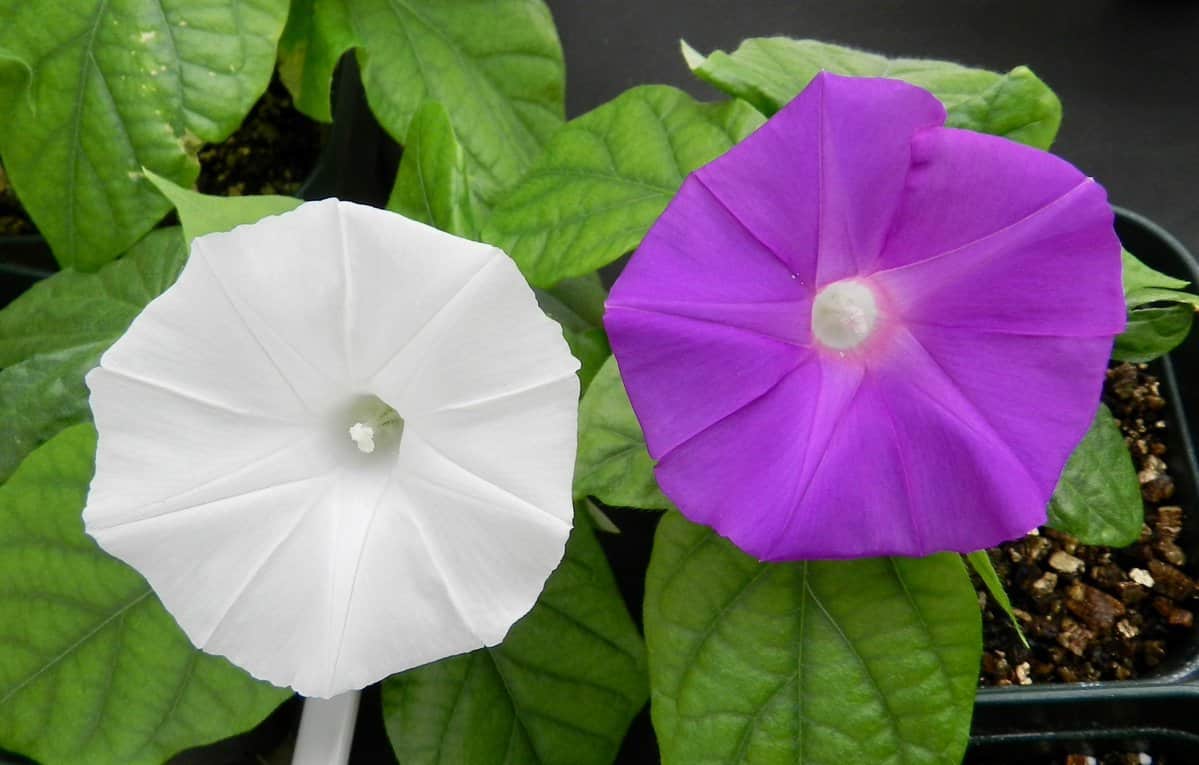In A First, Scientists Alter Flower Colour Using CRISPR
Genetically-modified, colour-altered varieties of the important cut-flower crop carnation have now been commercially available for nearly ten years. But these modifications can largely follow genetic engineering techniques that primarily target the flavonoid pathway as a means to alter flower colour.
Now, using the CRISPR-Cas9 gene-editing tool, scientists have changed the flowers of the Japanese morning glory from its usual violet color to a pure white, by disrupting a single gene.
CRISPR-Cas9 is a rapid and easy to use gene editing technology that can selectively delete, modify or correct a disease causing abnormality in a specific DNA segment.
“CRISPR” refers to Clustered Regularly Interspaced Short Palindromic Repeats occurring in the genome of certain bacteria, from which the system was discovered; Cas9 is a CRISPR-associated endonuclease (an enzyme), the “molecular scissors” that are easily programmed to cut and edit, or correct, disease-associated DNA in a patient’s cell. The location at which the Cas9 molecular scissors cut the DNA to be edited is specified by guide RNA, which is comprised of a crRNA component and a tracrRNA component, either individually or combined together as a ‘single guide RNA’ (sgRNA).
The team of Japanese scientists from University of Tsukuba, Yokohama City University
and the National Agriculture and Food Research Organization (NARO), has now changed the flower color of the traditional Japanese garden plant from violet to white. Further, the alteration was so precise only a single gene disruption was enough to introduce this effect.Ipomoea nil or the Japanese morning glory has been a cherished flower since days of old. This ornamental plant is one of two plants already being studied as part of Japan’s National BioResource Project, therefore, the researchers had a significant body of genomic data to work with.
The team focused their work on a single gene called DFR-B, which encodes for an enzyme that gives the flowers and stem of the plant its color. Two other very closely related genes (DFR-A and DRF-C) sit side-by-side, next to DFR-B. Therefore, the challenge was to specifically and accurately target the DFR-B gene without altering the other genes. The CRISPR/Cas9 system was used as it is currently the most precise method of gene editing.
By snipping that gene out of the morning glory’s DNA, the researchers hypothesized that the flower should become colorless. They inserted the CRISPR/Cas9 system into tissue-cultured embryos of Japanese morning glory plants with the help of the DNA-transferring properties of the Rhizobium plant bacterium.
Around 75 percent of the transgenic plants had green stems and white flowers instead of the characteristic violet. The analysis also showed the neighboring genes, DFR-A and DFR-C, were undisturbed by the gene-editing technology. An intriguing twist occurred when the scientists examined the inheritance of the CRISPR-induced mutations in next generation plants. Among these plants, there were some that presented no sign of introduced foreign DNA.
“The successful results of the present study will facilitate the modification of flower colours and shapes with targeted mutagenesis in Ipomoea nil and other ornamental flowers or vegetables,” conclude the researchers.
































